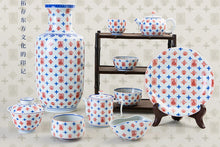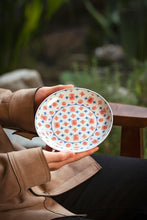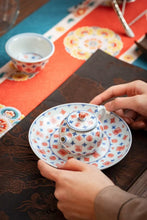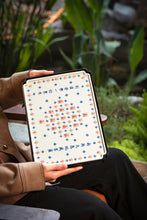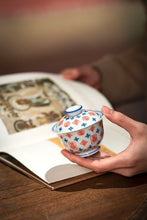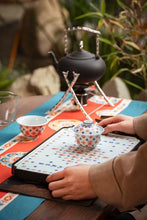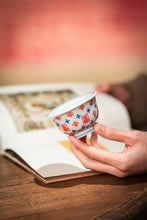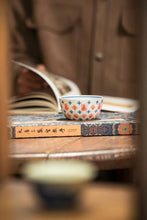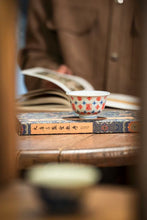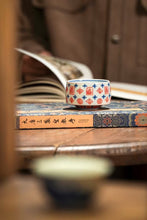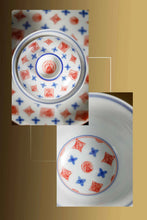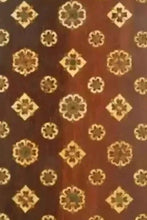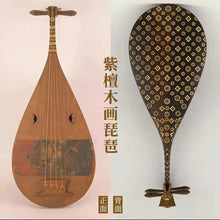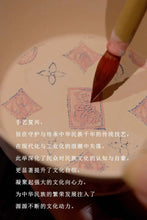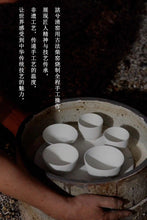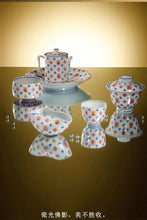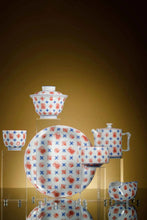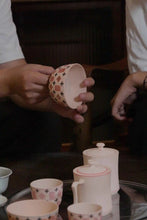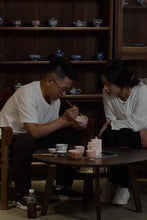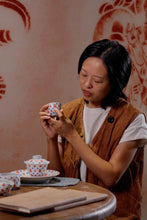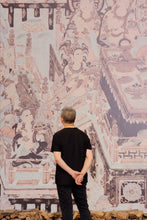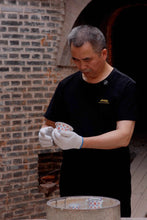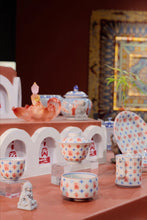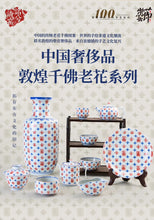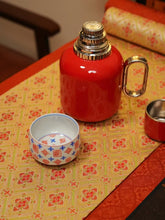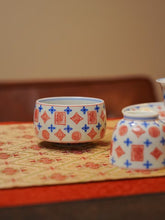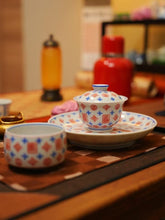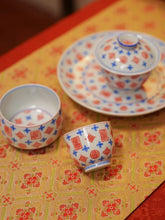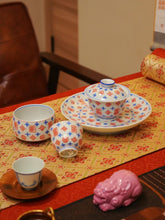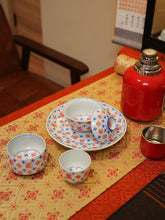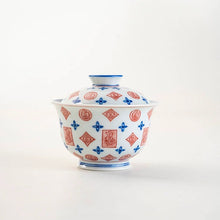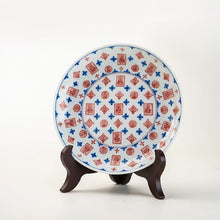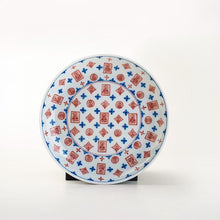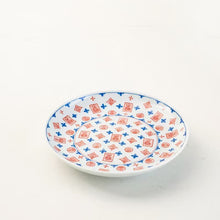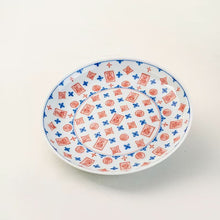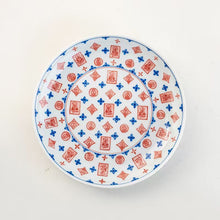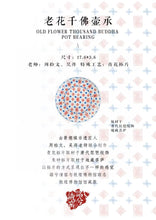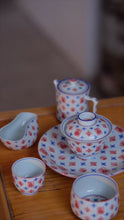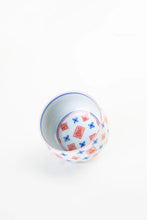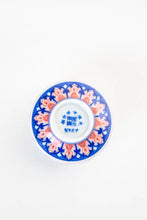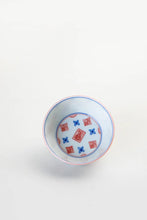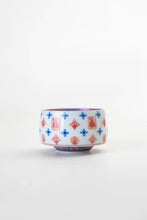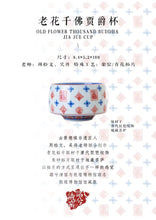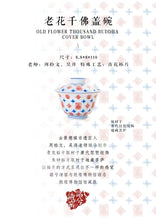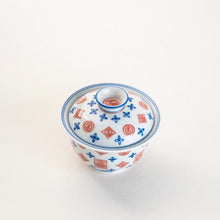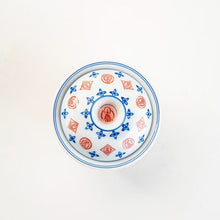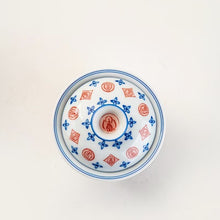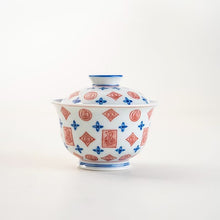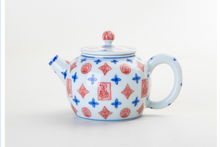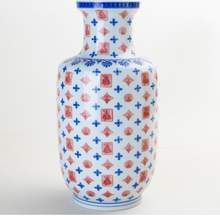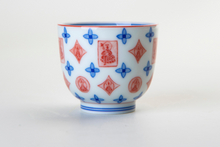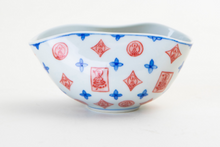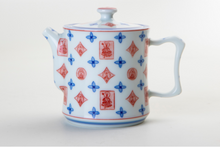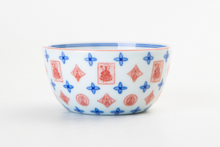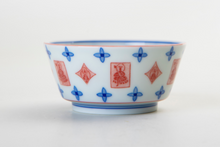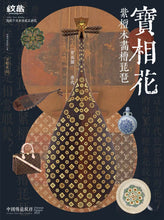
Wandering through the long river of history, there are always some encounters that amaze people, as if it were a grand feast carefully arranged by fate. When blue - and - white porcelain, a traditional Chinese porcelain treasure, and the grotto art of Dunhuang, these two resplendent pearls, intersect and collide across thousands of years of time and space, a legend of beauty unfolds.
Today, Tongxinshe Teahouse will present the "Chinese Luxury Dunhuang Thousand - Buddha Old - Pattern Series". This series will open a door to the realm of the blending of millennium - old cultures for the guests in the teahouse. Amidst the curling fragrance of tea, people can appreciate the unique charm of the integration of porcelain and Buddha's shadows.
Rubbings on porcelain are like messengers of time. Using mottled and ancient blue - and - white and red glaze for rubbing, they reproduce the flying - Apsaras grand scene of a millennium - long dream. Just by looking at the "scenes" in a small cup, people can get a glimpse of the mysterious and magnificent grotto murals. This is not only a kind of craftsmanship but also a reverence and inheritance of history. Mingxi Qingyao, a brand dedicated to blue - and - white rubbings, takes the visual effect of traditional paper - based rubbings as the cornerstone, cherishes the lofty ideal of "inheriting the knowledge of the sages of the past", adheres to the literati spirit, combines the traditional blue - and - white techniques of Jingdezhen, and elaborately crafts one unique literati ware after another with its own characteristics.
The Dunhuang Mogao Grottoes are the treasures of world art, and the thousand - Buddha patterns are born from them like stars. Mingxi Qingyao skillfully integrates the thousand - Buddha patterns into its designs, making each piece of ware seem to be endowed with a soul, allowing people to truly feel the profound and charming Dunhuang culture. Among them, the Ksitigarbha Bodhisattva in Cave 25 of the Yulin Grottoes, a representative work of Dunhuang art, is exquisitely outlined on the ware. As one of the four great bodhisattvas in Buddhism, Ksitigarbha Bodhisattva symbolizes the salvation of all sentient beings and the attainment of Buddhahood, carrying people's good wishes for good luck and peace. At the same time, the Tang - Dynasty treasure - phase - flower pipa, an ancient musical instrument, has also come into the design vision. This pipa, with a history of more than 1,300 years, has treasure - phase - flower patterns on it, demonstrating the prosperity of the Tang Dynasty. Applying this element to product design, the perfect integration of classical beauty and modern fashion is achieved, just like a dialogue across time and space.
Behind this series of exquisite wares is the silent perseverance and dedication of a group of craftsmen. Master Feng Heping, as a representative inheritor of Jiangxi Province's intangible cultural heritage, has been guarding the ancient art of firing in a wood - fired kiln for forty years. The wood - fired kiln is not only a precious heritage of Chinese ceramic firing art but also an important carrier of the Chinese nation's thousand - year - old cultural inheritance. And Zhou Jianwen, a national first - class technician, with more than twenty years of inheritance of antique blue - and - white techniques, skillfully integrates the "old - pattern" elements with the essence of Chinese and Western cultures, making the ancient blue - and - white art radiate new vitality in the new era.
The thousand Buddhas are silent, and the Buddha's light is shining brightly. They have witnessed the glory of history and also carried the cultural inheritance. The flying Apsaras in the Dunhuang murals are dancing gracefully, and the old - pattern designs are blooming with classical charm in the interlacing of light and shadow. Each line is a trace of history, and each smear of glaze tells the ancient legends of Dunhuang. The porcelain light and Buddha's shadows set off each other, presenting a breathtaking beauty.
At the Jingdezhen Wood - Fired Kiln Festival in the golden autumn of October, the Dunhuang Thousand - Buddha Old - Pattern Series of Mingxi Qingyao made a stunning debut, attracting the attention of countless people and becoming the focus of public attention. And its legendary journey has not stopped there. Soon after, it will cross mountains and seas and step onto the hall of the Louvre in France, showing the unique charm of traditional Chinese culture to the world. This is not only the honor of Mingxi Qingyao but also a great expedition of traditional Chinese culture, allowing the world to see the profoundness and boundless charm of Chinese culture and continuing to write a glorious chapter for China on the world cultural stage.
























































